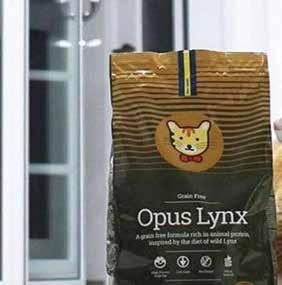
2 minute read
Meal or Whole Meat?


Advertisement

Meal r Whole Meat?
PETNOURISH
Like so many simplistic questions in the pet food industry the answer is not simplistic. Let’s start by just telling you more about what “meal” is. Here are some basic facts: • Meat meals are exceptionally concentrated dry forms of the corresponding whole meat. So, analysis will show that pet foods using this concentrate contain more protein than the whole meats. • Whole meat, before it is cooked, contains about 70 percent water and around 15 percent protein. After cooking away, the fat and water… the remaining protein weighs very little. Brands that use whole meat will usually have to use a meal (later in the ingredient list) to get to the minimum protein percentage they are stating. They use whole meat because it is heavy from water weight and can look like a small amount of protein is the first ingredient because this is how the order of ingredients is determined. You must investigate this; if you are buying a fish-based food for instance and the first ingredient is a whole meat fish, there could be an alternate protein meal later in the ingredient list. This is to make the higher cost protein appear first in the ingredient list. • The actual “by-weight” nutrient content before cooking? Whole meat, 15% protein… meat meal, 65% protein. Pound-for-pound…that’s more than four times as much protein in meat meal… as in the whole meat itself.



Now, these statistics alone will only tell you about the difference between meal and whole meat. As with all ingredients you read on a pet food label it tells you nothing about the quality of the meal or the meat! Choosing a meat over a meal or vice versa alone will not provide higher quality. Meal is more concentrated than its whole meat version but that does not mean higher quality. So, at the end of the day all meal is not created equal just like all whole meat is not created equal. You still must choose a company that only uses the highest-grade meats. Do not be afraid to ask about how much your provider knows about the sourcing and traceability of these ingredients. Another thing to watch out for are by-products; these are an example of a low-quality meat regardless if it is a whole meat or a meal. Low quality whole meats and meals will not be as digestible in the body of your pet; meaning low quality will deliver less overall nutrition. The last piece of information to provide is that fresh whole meats are more prone to bacteria growth. In this age of a recall every other day it is a consideration. Did you know what meal was before this read?











